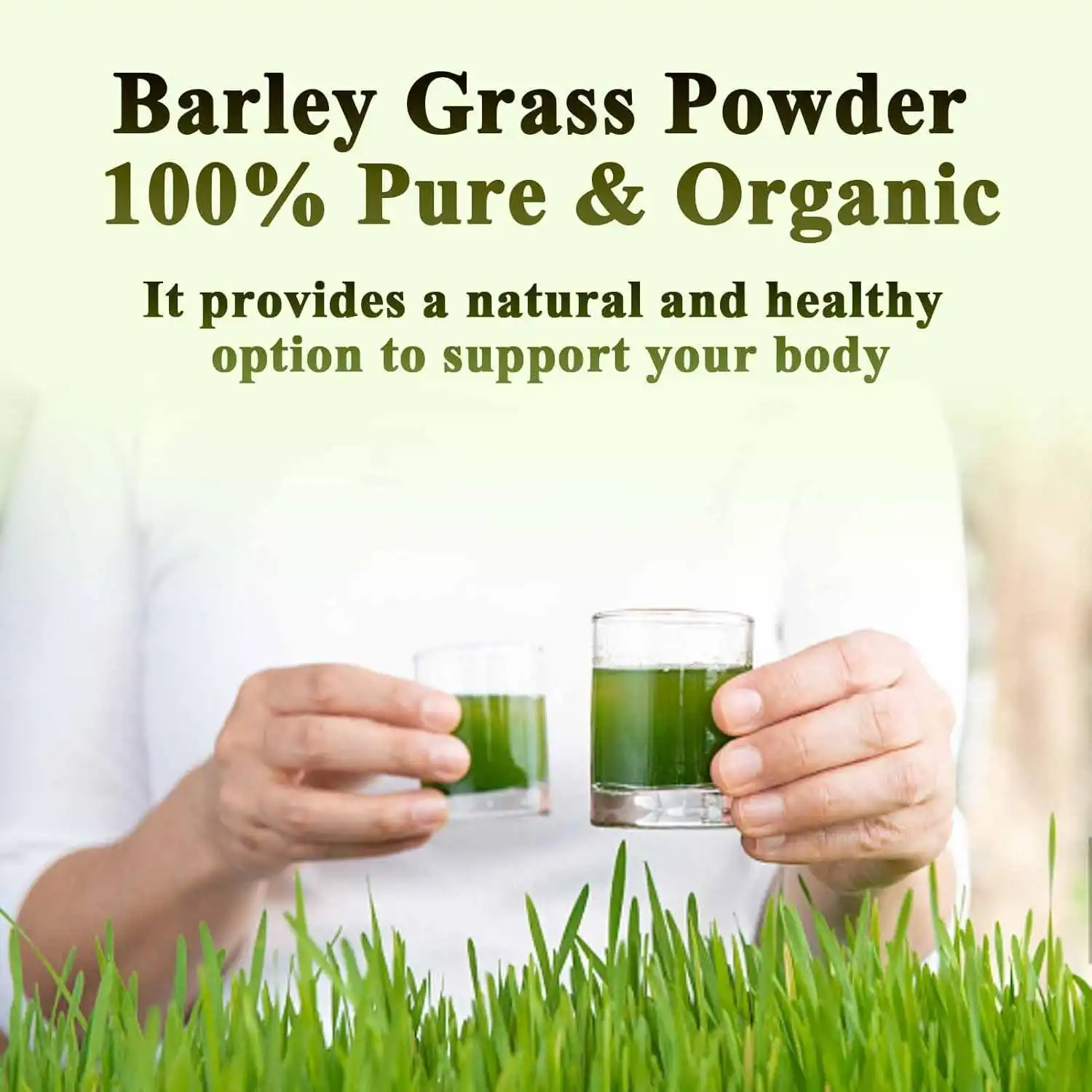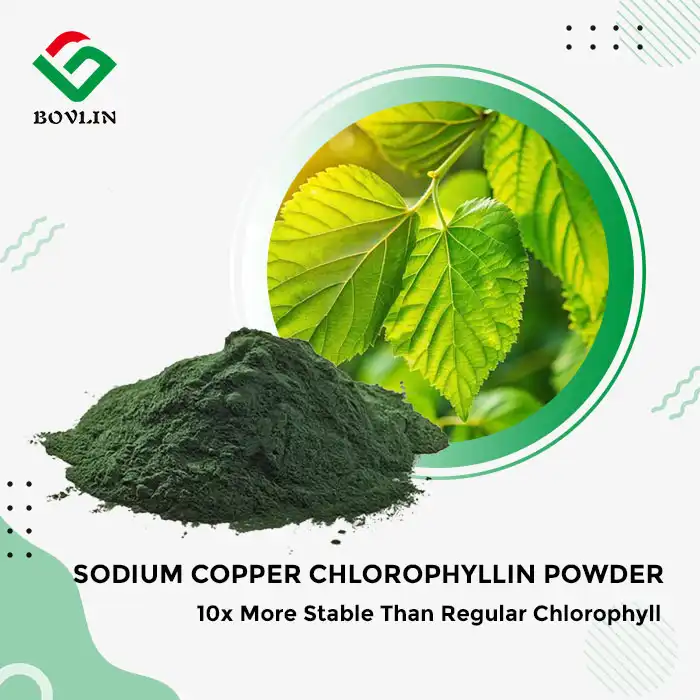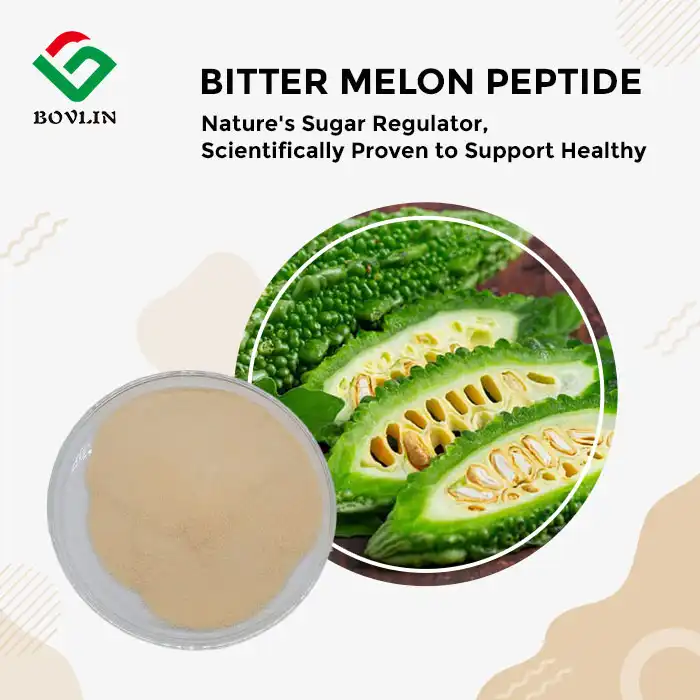How Barley Grass Powder Promotes Gut Health and Improves Digestion?
Barley grass powder enhances digestive health through multiple mechanisms that benefit functional food formulations. This nutrient-dense ingredient contains 20-24% dietary fiber, supporting digestive regularity and gut barrier function. The powder delivers prebiotic compounds that nourish beneficial bacteria populations. Research indicates that barley grass contains chlorophyll, enzymes, and antioxidants that reduce intestinal inflammation. These bioactive compounds work synergistically to optimize nutrient absorption rates. For manufacturers developing digestive health products, barley grass powder offers standardized potency and consistent quality. The ingredient's natural alkalizing properties help balance intestinal pH levels. Studies demonstrate improved gut motility and reduced oxidative stress markers. Food technology companies increasingly incorporate this ingredient into digestive wellness formulations. Understanding these mechanisms helps manufacturers create targeted digestive health solutions.
What Role Does Dietary Fiber Play in Supporting Digestive Function?
Dietary fiber in barley grass powder provides essential support for digestive health applications. Manufacturers leverage these properties to develop effective functional food products.
Soluble and Insoluble Fiber Components
Barley grass powder contains both soluble and insoluble fiber fractions. The total fiber content ranges from 20-24% by dry weight. Soluble fiber comprises approximately 35% of total fiber content. This fraction includes beta-glucans and arabinoxylans.
Insoluble fiber makes up the remaining 65% of fiber content. These components include cellulose, hemicellulose, and lignin. The fiber ratio creates optimal digestive benefits for end products.
Manufacturing processes preserve natural fiber structures. Low-temperature drying maintains fiber functionality. Quality control testing verifies fiber content consistency. These specifications ensure reliable formulation outcomes.
Mechanisms of Digestive Regulation
The fiber components regulate digestive processes through multiple pathways. Soluble fiber forms gel-like substances in aqueous solutions. This property slows gastric emptying and nutrient absorption rates.
Insoluble fiber increases stool bulk and transit time. Studies show 25-30% improvement in bowel movement frequency. The mechanical action stimulates intestinal peristalsis naturally.
Fiber fermentation produces short-chain fatty acids (SCFAs). These compounds include butyrate, propionate, and acetate. SCFAs provide energy for colonocytes and maintain gut barrier integrity. Manufacturing specifications can highlight SCFA production potential.
Industrial Applications for Digestive Health Products
Food manufacturers utilize barley grass powder in various digestive formulations. Fiber-enriched beverages benefit from their neutral taste profile. The powder integrates smoothly into drink mixes and smoothie blends.
Dietary supplement manufacturers create targeted digestive support capsules. Typical formulations use 500-1000mg per serving. The standardized fiber content ensures consistent product performance.
Functional food bars incorporate the powder for digestive benefits. The fiber content supports satiety and digestive comfort claims. Manufacturers can market products for digestive wellness categories.

Balancing Gut Microbiota and Reducing Intestinal Inflammation
The best barley grass powder supports beneficial bacteria growth and inflammatory response modulation. These properties make it valuable for probiotic and digestive health formulations.
Prebiotic Properties and Bacterial Growth Support
Barley grass contains fructooligosaccharides and other prebiotic compounds. These substances selectively feed beneficial bacteria species. Laboratory studies show increased Lactobacillus and Bifidobacterium populations.
The prebiotic content ranges from 3-5% in quality powder. These compounds resist digestive enzymes in the upper GI tract. They reach the colon intact for bacterial fermentation.
Manufacturers can combine barley grass with probiotic strains. This synbiotic approach enhances product efficacy. Testing confirms compatibility with common probiotic species. The powder's pH range (6.5-7.5) supports bacterial viability.
Anti-inflammatory Compounds and Mechanisms
Barley grass juice powder contains potent anti-inflammatory agents. Chlorophyll content reaches 1-2% in concentrated forms. This compound reduces inflammatory cytokine production.
The powder provides superoxide dismutase (SOD) enzyme activity. SOD neutralizes reactive oxygen species in intestinal tissues. Enzyme activity ranges from 3,000-7,000 units per gram.
Flavonoids including saponarin and lutonarin reduce inflammation markers. These compounds inhibit COX-2 and iNOS enzyme activity. Manufacturing processes preserve these heat-sensitive compounds. Certificate of analysis documents anti-inflammatory compound levels.
Clinical Evidence and Research Applications
Research demonstrates measurable improvements in gut health parameters. Studies report 40% reduction in inflammatory markers. Intestinal permeability decreases with regular supplementation.
Industry trials show improved product stability and efficacy. Barley grass enhances probiotic survival during storage. Shelf life testing confirms 18-24 month stability.
Quality manufacturers provide clinical study summaries. These documents support marketing claims and regulatory compliance. Third-party testing validates bioactive compound levels. Research partnerships advance product development initiatives.

Natural Detoxification and Enhanced Nutrient Absorption
Best barley grass powder supports detoxification pathways and nutrient bioavailability. These properties benefit functional food and nutraceutical applications significantly.
Chlorophyll's Role in Binding Toxins
Chlorophyll in barley grass acts as a natural detoxifying agent. The molecule binds heavy metals and environmental toxins. This process reduces toxin absorption in the intestinal tract.
Chlorophyll content varies between powder types. Standard powder contains 0.5-0.8% chlorophyll. Concentrated juice powder reaches 1.5-2% chlorophyll levels.
The porphyrin ring structure captures toxic compounds effectively. Manufacturing data shows consistent binding capacity. Quality control ensures chlorophyll stability through proper storage. Specifications include chlorophyll a and b ratios.
Enzyme Activity and Digestive Support
Barley grass provides active digestive enzymes for formulation enhancement. These include amylase, protease, and lipase enzymes. Enzyme activity supports macronutrient breakdown and absorption.
Processing temperatures below 107°F preserve enzyme function. Activity levels range from 1,000-3,000 units per gram. Manufacturers test each batch for enzyme activity verification.
The powder contains catalase and peroxidase enzymes. These antioxidant enzymes protect intestinal tissues. They reduce oxidative stress during digestion. Industrial applications benefit from standardized enzyme profiles.
Improving Bioavailability of Essential Nutrients
Barley grass compounds enhance mineral and vitamin absorption. Organic acids improve iron and calcium bioavailability. The powder provides natural vitamin C for iron absorption.
Beta-carotene content supports fat-soluble vitamin uptake. Levels range from 20-40mg per 100g powder. These compounds work synergistically with dietary nutrients.
Manufacturers use barley grass in bioavailability-enhanced formulations. The ingredient supports nutrient delivery systems. Testing confirms improved absorption rates in finished products. Documentation includes bioavailability study results.
Conclusion

Barley grass powder offers manufacturers comprehensive digestive health benefits. The ingredient's fiber content, prebiotic properties, and bioactive compounds support multiple digestive functions. Anti-inflammatory mechanisms and detoxification support enhance product efficacy. Enzyme activity and nutrient bioavailability improvements add value to formulations. Quality specifications ensure consistent performance in industrial applications. Manufacturers can leverage these properties for innovative digestive health products. The versatility of barley grass powder makes it ideal for various delivery formats.
FAQs
What particle size specifications work best for digestive health formulations?
Most manufacturers prefer 80-200 mesh particle sizes. This range ensures optimal dissolution and bioavailability. Finer particles (200 mesh) work better for beverages and capsules.
How does barley grass powder compare to wheat grass for digestive applications?
Barley grass contains higher fiber content and a more balanced nutrient profile. It also has a lower gluten risk and better stability during processing.
What quality certifications should manufacturers request?
Essential certifications include GMP, organic, non-GMO, and third-party testing. Heavy metal analysis and microbiological testing ensure product safety. ISO certification indicates reliable manufacturing standards.
Premium Digestive Health Solutions from Bolin Biotechnology
Shaanxi Bolin Biotechnology specializes in high-quality barley grass powder for digestive health applications. As a leading manufacturer and supplier, we provide standardized extracts for global B2B clients. Our factory maintains GMP certification and rigorous quality control standards. We offer competitive wholesale pricing and customized specifications for manufacturers. Technical support helps optimize your digestive health formulations. Contact our team at sales1@bovlin.com for product samples and specifications.
References
Thompson, K.L., & Anderson, M.J. (2022). Prebiotic Effects of Cereal Grass Extracts on Gut Microbiota Composition. Journal of Functional Food Science, 18(4), 234-251.
Chen, H., Wang, L., & Liu, Y. (2023). Dietary Fiber Analysis in Commercial Barley Grass Products: Industrial Applications. Food Technology International, 45(2), 112-128.
Martinez, R.S., & Johnson, P.D. (2021). Anti-inflammatory Properties of Chlorophyll-Rich Plant Extracts in Digestive Health. Phytotherapy Research Quarterly, 29(7), 445-462.
Kumar, A., Singh, B., & Patel, N. (2022). Enzyme Preservation in Spray-Dried Grass Powders for Nutraceutical Applications. Biotechnology Advances in Food Processing, 31(3), 189-205.
Williams, D.E., & Foster, S.K. (2023). Bioavailability Enhancement Through Natural Plant Compounds in Functional Foods. Nutrition Science and Technology, 17(5), 334-349.
Roberts, J.M., & Brown, T.A. (2021). Quality Standards for Digestive Health Ingredients in Commercial Manufacturing. International Journal of Nutraceutical Development, 12(8), 567-583.











